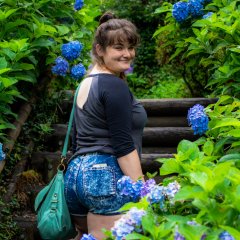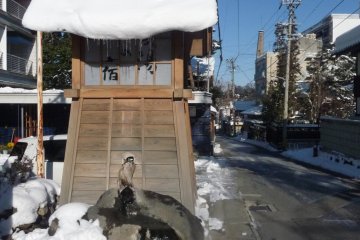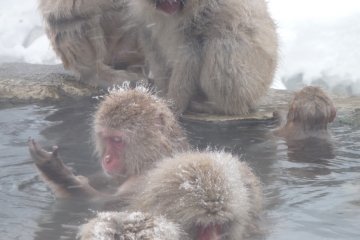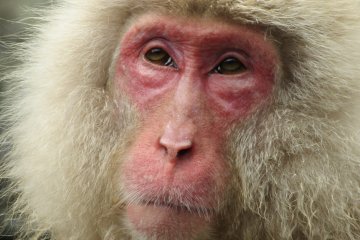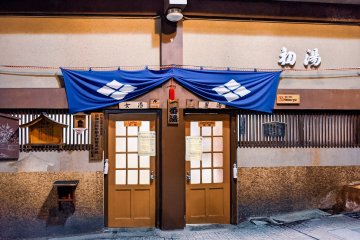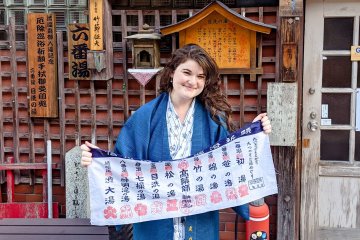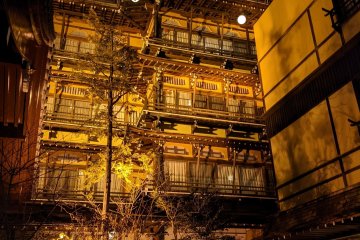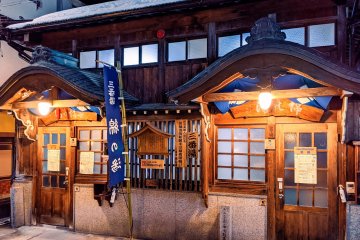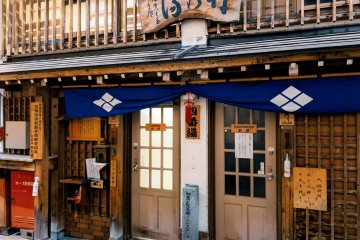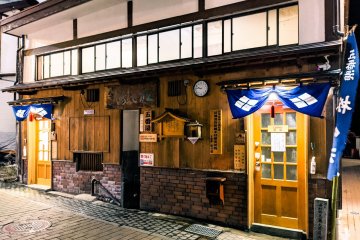Shibu Onsen is a 1,300 year old traditional onsen town in Nagano. It’s nestled in between the mountains, bracketed between Jigokudani Monkey Park and Yudanaka Onsen. It’s a beautiful area – the town is built up on a slope next to the Yokuyugawa River, and looking across the valley offers stunning views of the Japanese Alps. The town has always been based around the plentiful hot springs, spanning back to the days when samurai would come to recover from battle in the waters, or pilgrims would stop for a dip on their way to Zenkoji in Nagano.

Visiting this little town is truly like taking a step back in time – the roads are narrow and paved with cobblestones. The buildings lining the streets have traditional wooden architecture, and in some cases, are several hundred years old. In the evening, the streets are lit with a soft golden glow from lanterns and the air is filled with the sound of clacking geta. Visitors staying at one of the local inns can wander around the streets in yukata and explore the retro snack shops, inns, and shrines – including the gorgeous Kanaguya inn. Kanaguya is said to be one of the (many) inspirations for the bathhouse in Spirited Away, and is several hundred years old.

The 9 Bathhouses
All the cozy onsen town-charm aside, there’s one main reason to come to Shibu Onsen: to complete a tour of the town’s 9 baths. The town’s streets are dotted with 9 small bathhouses. These baths are referred to as soto-yu (外湯), which means “outside bath.” The baths are actually all indoors, the “outside” in this case means that the baths are not inside one of the inns.
The baths, with the exception of #9 (O-yu) are very small, with only enough room for 2-3 people in each. They come in a variety of styles as well, some are wooden, and some are tiled. All the baths are kake-nagashi style, meaning that the hot spring water constantly flows into the bath and pushes out old water, letting it overflow into the surrounding grates. This constant filling of the bath keeps the water fresh and hot. Very hot. Each bath comes equipped with a cold water tap that you can turn on to try to cool the bath down before entering. Just be sure that you turn the cold water off before leaving the bath.
The hot spring water can be anywhere from milky colored, to clear, to a minerally-rust color depending on the bath. The difference in water is because the area is so rich in hot spring sources, the town can draw from a variety of hot springs with different properties and mineral content. Because of this, each bath is supposed to have a different curative effect.
According to the town’s map, this is what disease each respective bath treats:
- Hatsu-yu: gastrointestinal issues
- Sasa-no-yu: skin conditions
- Wata-no-yu: cuts, injuries to the skin, and other skin conditions
- Take-no-yu: gout
- Matsu-no-yu: nerve pain and spinal issues
- Mearai-no-yu: eye diseases
- Nanakuri-no-yu: injuries and trauma
- Shinmeidaki-no-yu: women’s health and gynecological diseases
- O-yu: joint and nerve issues

Using the Baths
The town has set up an interesting way to use the baths. They’re open from 6AM - 10PM, but are locked at all times. The baths can only be accessed by locals (who each have their own key) or by overnight guests. Only the largest bath, O-yu, is open for day use. It costs ¥500, which you can pay at the Ryokan Association office or at the Shibu Onsen parking lot. Once you have a day-use bath ticket, you can go to one of the nearby inns to get someone to unlock the bath for you. The bath is available for day-users from 10AM - 4PM.
If you’re staying overnight, a bathhouse key will be given to you when you check in to your inn for the night. This key will open the doors to all 9 bathhouses. The inn I stayed at also provided guests with “going out baskets” for you to stick your towel, change, and keys in. However, you shouldn’t bring any bathing supplies. Unlike most onsen, you don’t shower before entering the soto-yu. You simply use a bucket to rinse your body before getting in. It’s also important to note that there isn’t any lockers in the changing areas in the bathhouses, so use your own discretion when it comes to carrying around money or valuables.

An important component to touring the 9 baths is filling out a tenugui towel with bathhouse stamps. Before you head out of your inn to start relaxing in the baths, you can stop by the front desk to pick up one these towels for¥350. Outside each bath, there is a stamp to add to your towel. I actually made the mistake of putting the wrong stamp under the wrong bath name, so make sure to double check before stamping!

Apparently, if you get all 9 stamps from the bathhouses, and a final one from Takayakushi Shrine, you will receive blessings for good health and long life. Whether it’s true or not, you’ll still get to take home a unique souvenir filled with fun memories of enjoying Shibu Onsen’s baths.



